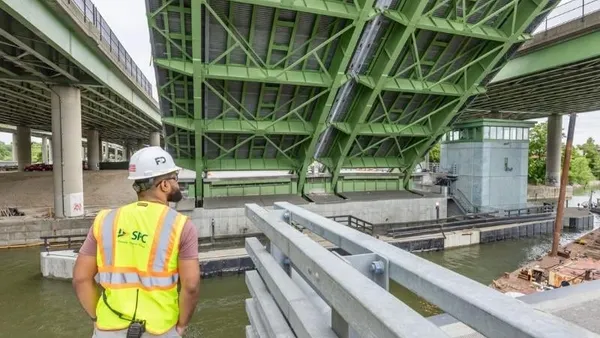Dive Brief:
-
The Federal Aviation Administration's decision that a $250 million proposed Denver-area highway poses a safety risk by being inside a local airport's runway-protection zone has dealt the long-delayed project what could be a fatal financial blow, according to The Denver Post.
-
The FAA said Jefferson Parkway's current route, which would be part of a beltway around Denver, is too close to runways at the Rocky Mountain Metropolitan Airport. Moving the highway's path would require land acquisitions, increasing costs and making it harder to find a private-sector partner willing to take on the risk, opponents said.
-
The proposed parkway has been the target of environmental protests and lawsuits from critics who claim that the beltway could cause suburban sprawl, increase traffic congestion, disturb radioactive contaminants and run too close to a wildlife refuge.
Dive Insight:
The FAA has the power to delay, and even sideline, projects that it considers to be a threat to safe travel in and out of airports.
The Los Angeles Rams had to postpone above-ground construction on the team's new $2.6 billion stadium in Inglewood, CA, after the agency expressed concern over the venue's height. The FAA initially said the stadium could interfere with Los Angeles International Airport's radar systems, but, after a year-long study, it approved the design on the condition that the team pay for $29 million of extra radar equipment.
The new $2 billion Las Vegas Raiders stadium must also undergo an FAA review to determine whether the structure's height will interfere with air traffic.
The concerns have less to do with physical obstacles and more with how signals sent to and from the structure on the ground can affect planes in the air.
Last year, FAA concerns over the height of a planned Seattle high-rise led developer Crescent Heights Inspiration Living to scale down the project from 101 stories to 94. The FAA issued owners a Notice of Presumed Hazard, which said the building could have an "adverse physical or electromagnetic interference effect upon navigable airspace or air navigation facilities" at its original height. The agency also said that construction cranes could affect helicopter traffic at the nearby Harborview Medical Center.













